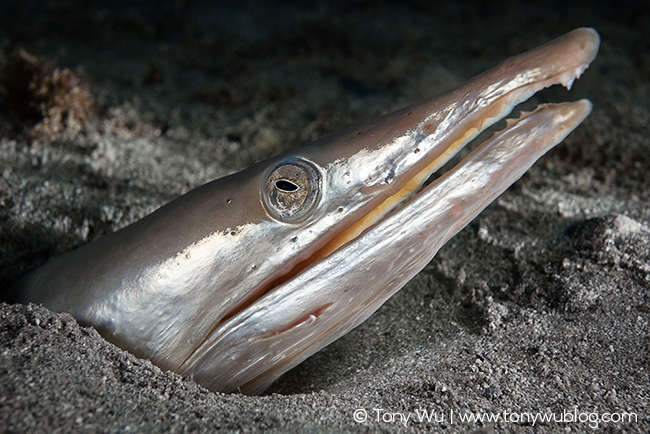Years ago, a man I admire and have sought guidance from many times shared a thought with me, something that immediately struck a chord, and has stuck with me ever since.
At the time, I was contributing to magazines and had started to make a name for myself, but really, I was a babe in the woods.
My friend was a seasoned pro, a pioneer in underwater photography, with a long track record of achievement.
Our conversation was in the context of getting results.
His words of wisdom were: “A real professional is someone who can come back with useable images from any conditions, however bad.”
In other words, don’t make excuses. Figure out what can be done and do it, because Mother Nature does what she wants and cares not for one’s best-laid plans.
Recently, I found myself putting that advice to the test (once again).
Having planned for a year to document a specific behavioural event, going so far as to get help from two equipment manufacturers to custom design and make stuff that I needed, I faced a dilemma. Two, actually.
First, the animals involved never showed up. Ocean currents were off, temperatures were askew, and nothing was happening as it should. (As an aside, this has been the case pretty much everywhere I’ve been since 3Q 2017. Things have been wonky.)
I waited a month. Nada.
Second, my equipment wasn’t working properly. In short, I couldn’t get my strobes to fire in a predictable manner, so even if nature went my way, I’d be facing fundamental technical issues.
As they days passed, I grudgingly came to accept that this would not be the year that I would have a chance to photograph what I wanted to. I spent time hanging out with friends, cooking and eating great food, making new friends, researching other potential natural history phenomena to document, pondering equipment issues, working out, etc.
Before I departed in utter failure, I ended up diving once, mostly because I wanted to test my camera set-up in the water. It helped that the weather and water conditions were perfect for that one day and that day only.
I had spent hours and hours testing on land, manipulating every variable possible, but the only way to be certain with underwater gear is to take it underwater.
All told, I spent just over an hour in the ocean. This is the resulting image.

It is a type of snake eel (Ophisurus macrorhynchos), known as dai-nan umi hebi (ダイナンウミヘビ ) in Japanese.
I picked this individual as a subject because it was cooperative. It was in its hole and seemed unconcerned with my presence. It didn’t plunge into the substrate like others. Perfect for methodical testing.
The photograph itself is an “OK” image in terms of visual impact. From a technical standpoint, the file quality is incredible, testament to the capabilities of digital cameras these days.
The important thing about this photo though, is that I was able to take it with malfunctioning gear. No matter what settings I used, my strobes would not fire or sync properly. All black or all white images was pretty much the choice I had.
Cue the thought: “A real professional is someone who can come back with useable images from any conditions, however bad.”
I decided to shoot the strobes without syncing, in other words, as manually triggered slave strobes.
I disconnected all but one flash, which I used as the master. I pointed that flash almost entirely away from the subject, using it only to trigger the other strobes, which I set manually.
I placed the strobes at distances I estimated to be appropriate for the light output settings, based on previous experience and knowing that light falls off at the inverse of the square of the distance between strobe and subject. (Not as complicated as it may sound. If you double the distance, the light drops to 1/4 of the amount.)
Once I confirmed that the set-up worked, it took a couple of tries to fine-tune the distances and angles, then wait for the snake eel to adopt a photogenic expression.
I’m sharing this photo and tale not because I think it’s the best photo ever, or because I want whine about Mother Nature or gear, but because I want to share the words of wisdom I received decades ago.
It really doesn’t matter if you’re a professional or just having fun.
When faced less-than-ideal conditions, be creative, be original, do whatever possible to work around problems and produce solid results, even if the results are totally different from what you had originally envisaged.